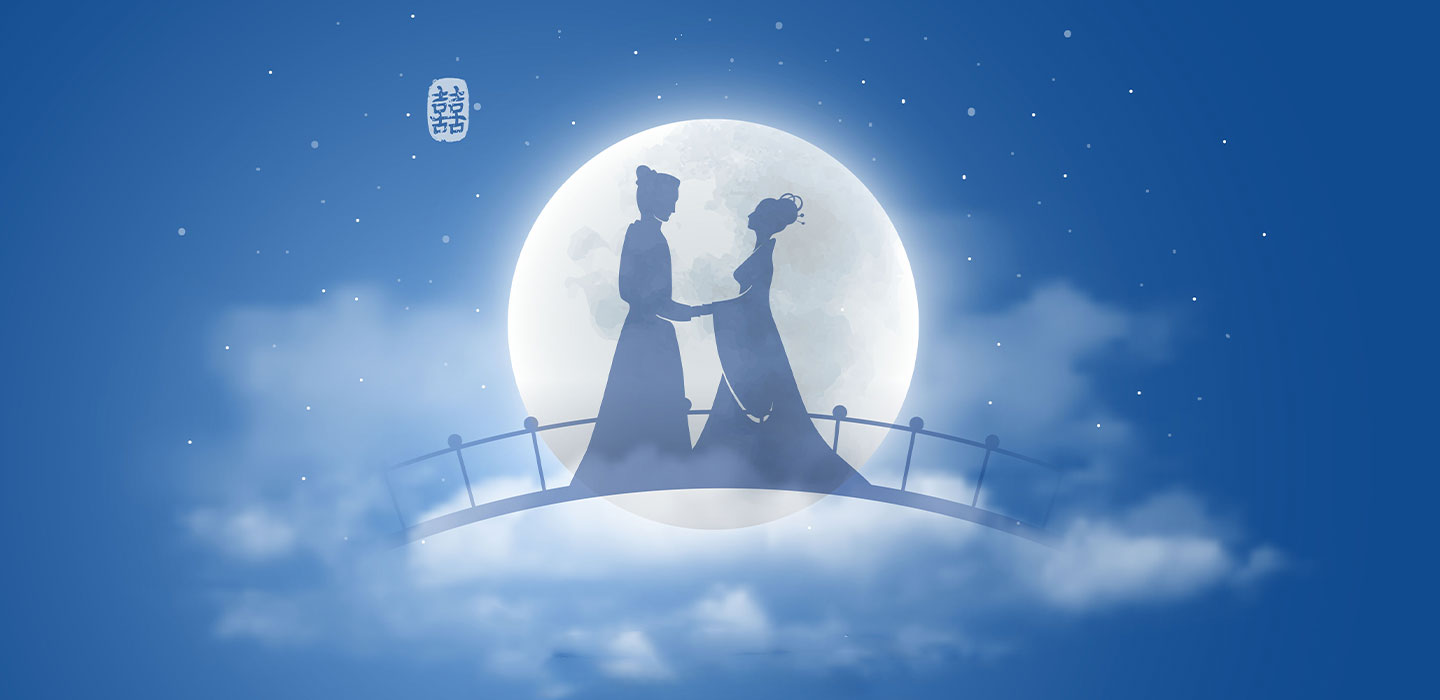
Celebrating Qixi Festival, China’s Valentine’s Day
Culture and Traditions
播放影片
Summary
With the 2000-year-old story of star-crossed lovers dating back to the Han Dynasty, the Qixi Festival is the oldest form of Valentine’s Day and holds a cherished and deep cultural significance in Chinese folklore.
Script
With a history spanning over 2000 years dating back to the Han Dynasty, the Qixi Festival, or Double Seventh Festival, holds deep cultural significance in Chinese folklore and can be said to be the earliest form of Valentine’s Day.
Falling on the 7th day of the 7th lunar month, which in 2023 will take place on August 22nd, this is a festival full of love and romance, based on a legend that has been passed down through generations.
As always, with famous myths, there are many variations of the story, but they all center around two persons. Zhinü , the weaver girl, symbolizing the star Vega, and Niulang , the cowherd who symbolizes the star Altair. Zhinü is the youngest of 7 daughters of the Jade emperor, the goddess of weaving who weaved her father’s royal robes out of the clouds.
Sadly the love between Zhinzü and Niulang was forbidden, and literally “star-crossed”, with the result that they were banished to opposite sides of the heavenly river, symbolizing the Milky Way. Once a year, on the 7th day of the 7th lunar month, they are reunited when a flock of magpies form a bridge to enable them to meet.
Nowadays, there are many ways in which people celebrate the Qixi festival and some typical activities include making and releasing paper lanterns, while wishing for good fortune and happiness. People also write their wishes on small pieces of paper and hang them on trees.
On the evening of the Qixi Festival, it is believed that the stars Vega and Altair, representing Zhinü and Niu Lang, are closest to each other, and couples often go outside to watch the stars and make a wish for everlasting love.
In certain regions, women engage in needlework competitions to showcase their skills, and one of the earliest forms of this dates back to the Han Dynasty when young girls would thread needles with five, seven or even nine holes. These competitions were a test of ingenuity as well as a way to honor the weaving talents of Zhinü.
As with any other traditional Chinese festivals, it is a time to enjoy special food to reflect the symbolism of the occasion. For the Qixi festival, sweet dumplings called “Qiaoguo” are prepared and are a popular treat containing glutinous rice flour, filled with delicious sweet fillings such as red bean paste or sesame paste. The dumplings symbolize reunion and, of course, sweet love!
While the theme of the festival is celebrated throughout China, there are some cultural variations in different regions. For example, in some areas, young girls prepare fruit, flowers and handicrafts as offerings for Zhinü, seeking her blessings for marriage and needlework skills.
In recent years, the Qixi Festival has gained more prominence as a commercial holiday, with increased marketing of romantic products and events. Couples exchange gifts of flowers, chocolates and jewelry, in much the same way as the Western Valentine’s Day is celebrated, enjoying romantic activities such as candlelit dinners or even weekend getaways.
The Qixi Festival has also influenced neighboring countries like Japan, South Korea and Vietnam, where variations of the festival are celebrated. In Japan, it is known as Tanabata, or the Star Festival, while in Korea it is called Chilseok.
Today the phrase “Niulang Zhinü” is commonly used to describe loving married couples and the Qixi Festival remains a cherished celebration of love, romance and devotion in Chinese culture.
